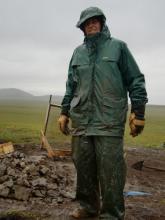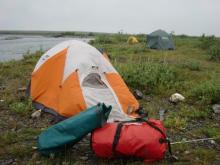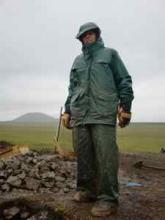What Are They Doing?
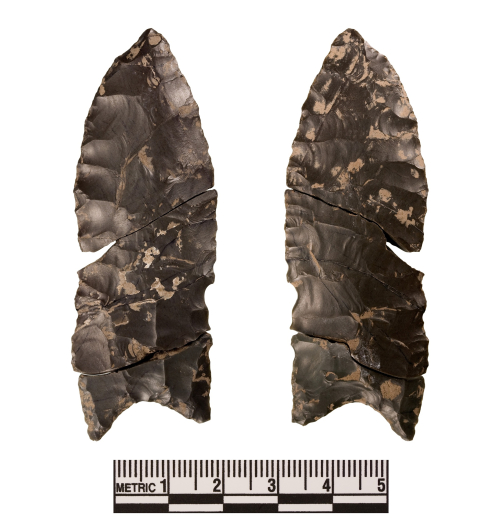
The site also contains fluted projectile points – a type of stone spear tip that is associated with many of the earliest archaeological sites in the continental United States. Fluted projectile points are found in Alaska and the Yukon Territory of Canada, but have never been reliably dated.
Because people migrated from north-to-south after entering the Americas from Asia across the Bering Land Bridge, fluted points in the far north are expected to be older than the fluted projectile points found in the continental United States. However, initial findings from Raven Bluff indicate that the fluted projectile points at this site are actually younger than the oldest fluted projectile points in the continental United States. By dating these artifacts, the research team studies the nature and timing of early human population movements in the Americas.
Where Are They?
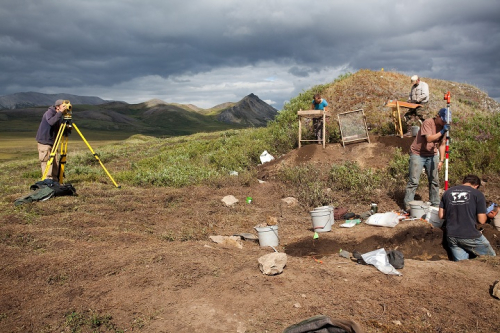
Latest Journals

Dr. Jeff Rasic specializes in prehistoric stone tool technology and the archaeology of northern hunter-gatherers. He is particularly interested in how the earliest people of the North made a living at the end of the last ice age. He is currently the acting curator of Archaeology at the University of Alaska Museum of the North, and an archaeologist at the National Park Service in Fairbanks. He has worked in the Caribbean, and throughout the United States, and since 1995 has focused on field work and research projects in Alaska, especially the northern and interior portions of the state.

Bill Hedman is the archaeologist for the federal Bureau of Land Management (BLM) Cental Yukon Field Office based in Fairbanks, Alaska. Bill has been working in archaeology for about 20 years, over 15 of which have been spent conducting fieldwork in Alaska. This work has taken him from the tip of the southeast panhandle to the Aleutian Islands to the North Slope of Alaska and many points in between. Being involved in everything from federal permitting for mineral exploration along the Dalton Highway to helicopter surveys in the DeLong Mountains is typical for Bill's field seasons. His favorite part of the job is figuring out how to get several thousand pounds of gear, people, fuel, and aircraft to some of the most remote corners of Alaska to find and test archaeological sites.

Dr. Buvit earned his Ph.D. at Washington State University in 2008 focusing on the geology of Stone Age archaeology sites in southern Siberia. He joined the Raven Bluff program in 2010 as the project geoarchaeologist to reconstruct the landscape around the site when it was occupied, identify natural processes that have altered the original context of the cultural material, and evaluate the age of the site. In addition to Asiatic Russia and arctic Alaska, he also has interests in Ice Age Japanese archaeology. When he is not in the field, Ian is the faculty coordinator of the McNair Scholars program and teaches anthropology at Central Washington University.

